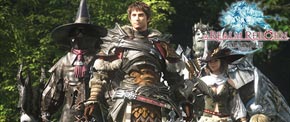Actualité
The portrait of the beloved displays various levels of transgressions of the canon and produces some grotesque images
Mise à jour : 16 avril, 2024 à 20:34
Par un auteur invité
Ma come la Natura tutte quante di pura terra fe,’ cosi sen’ vanno di quella ornate dal capo alle piante; (904) (As Nature made all of them of pure dirt, so they go around decorated with it from head to toe;)
Since they are always tending animals, they are said to assume subhuman aspect. Ornamentation and make-up, which in medieval texts were considered a source of suspicion and evidence of the woman’s evil nature, have become symbols of civilization and refinement in opposition to the roughness and filth of mountain women. The element of dirt, stressed in the bodily representation of the marginal female Other, reinforces the poet’s agenda to impose the hegemonic position of the elite, and to revile the vulgar for their lack of cleanliness, civility, and decorum. Here the female Other is depicted through revolting physical details (‘e i capei folti, bosco da pidocchi, / e gli denti smaltati di ricotta,/e le poppe, che van fin a’ginocchi’; thick hair is a forest of lice, the teeth are covered with cheese, and their breasts fall down to their knees), which confirm the condition of filth in which these women live. Perhaps because of their work herding, mountain women have developed the sturdiness of horses and donkeys, and indeed they have horseshoe feet, says Mauro; in short, they have acquired animal-like features: ‘Pie’ da cavalli che non posan mai./E par ch’abbian ferrati gli talloni / a guisa di somari e di cavalli’ (906) (Horse feet that never rest. They look like they have horse-shoed heels like donkeys or horses). Otherness in the denizens of the peripheral mountain areas is completely devoid of that subtext of erotic attraction that can be found in the rustic capitoli of Strascino, Berni, and Firenzuola. (904–5) (They have such strange beauty in their faces that they make Love sigh in sadness and lower the head of lust). The detail of lice-ridden hair, a recurring element in Mauro, in pseudo-Legacci, and in the ‘Stanze,’ seems particularly offensive to male poetic imagination, perhaps because it concerns the hair, the female body part that, as noted above, in classical lyric tradition epitomizes female beauty and seductiveness.52 It is not just the appearance and the dirt of mountain women that is ridiculed and described with disgust, but also their uncivilized manners and even their
The sight of mountain women not only fails to excite any sexual attraction, but is said to extinguish any lustful impulse: ‘E si strane bellezze nei volti hanno, / che sospirar Amor e gir dolente/col capo chino, e la lussuria, fanno
names. As Stallybrass observes, the Renaissance develops a new canon that distinguishes correct techniques for care of the body and establishes social purity; the process of bodily differentiation – outward bodily propriety, enclosure of the body, and cleanliness – allows the social elite to separate themselves from the vulgar (124–5). The filth and uncivilized habits of the ‘donne di montagna’ highlight their vulgar status, in contrast to the refined manners and social purity of the elites embodied by Mauro and della Casa: Voi [Della Casa] morireste di rider la festa, quando sen’ vanno a messa la mattina con le mutande de’ mariti in testa. (Poeti del cinquento, 907) (You would laugh a storm to see them on holidays, when they go to mass in the morning wearing their husbands’ underpants on their head.)
The poem is addressed to the future author of Galateo (1558), the most prominent Italian tract of its day on good manners and civility
The marginality/incivility of this socio-geographical group is evident in the most integral aspect of their culture, one that appears completely alien to the poem’s author. Mauro also indulges himself on the women’s names, considered too odd to show any Christian origin.53 Moreover, for their ugliness and lack of civility the mountain women are directly opposed to Roman courtesans, with whom Mauro and della Casa were particularly familiar during the 1530s.54 In conclusion, mock encomia in rustic poetry parody the traditional kissbrides.com Recommended Reading concept of feminine beauty. The grotesque is the result of authors in liminal position assuming the elitist standpoint of their aristocratic audiences and mocking the inadequate manners of peasants, porters, and mountain dwellers. Parody also targets the stereotypical conventions of feminine portraiture in high literary tradition. Paradoxical encomia employ the rhetorical technique of the descriptio and, by using trivial language and vulgar and allusive similes, they reverse descriptive order and transform the serious into the comic, perfection into deformity. Female ugliness is no longer expressed, as in the Middle Ages, in portraits of old age with attendant invective, and moral contempt, but in ridiculous images of women who subvert the models of perfection and proportion promoted in Renaissance classicism. Strascino’s two ‘Capitoli’ in rustic poetry inaugurate a distinctive
Dernières actus LeGamer.com:
- 29/04/2024: Jackpot Industry
- 29/04/2024: Algunas 16,000 Tragamonedas Gratuito En España Desprovisto Sometimiento
- 29/04/2024: Casino Über Schnellster Auszahlung 2024, Ausschüttung Inmitten Minuten
- 29/04/2024: Reseña Sobre Tragamonedas De balde Dragons Law Sobre 2023
- 29/04/2024: Greatest 10 Minimal Put Us Gambling enterprises Inside 2024




